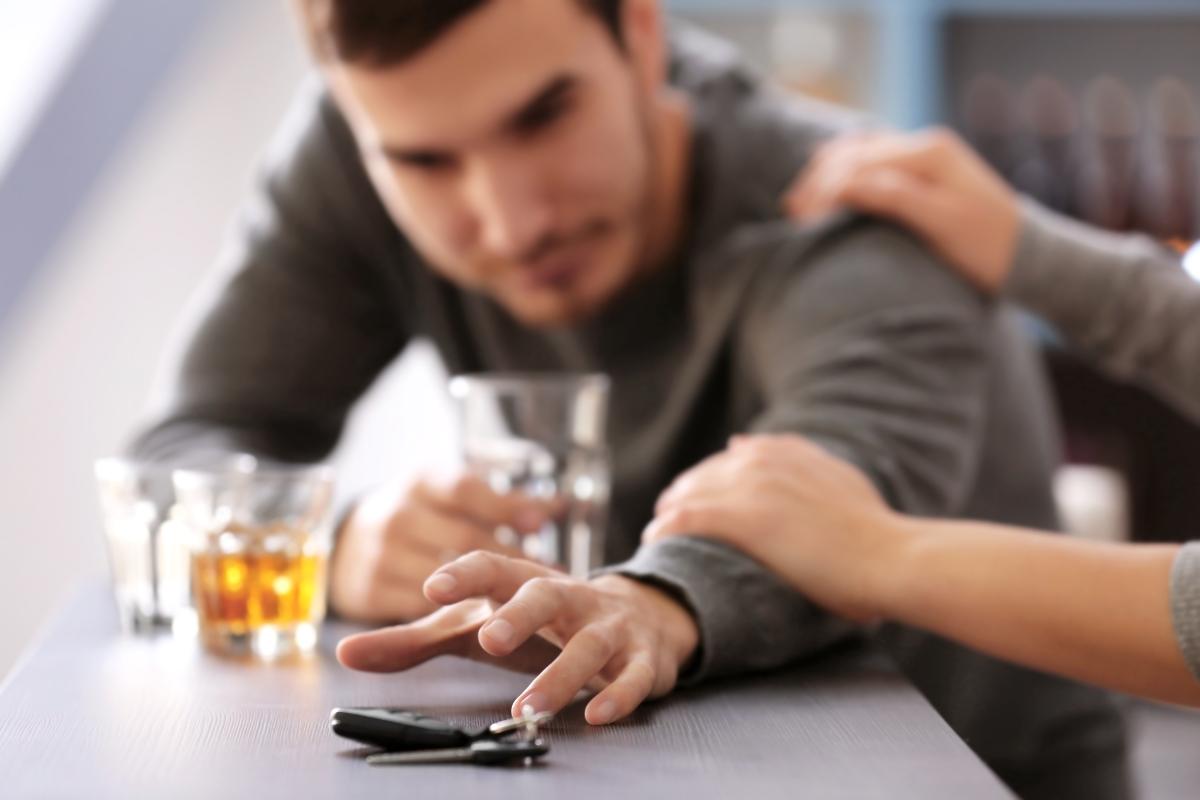Alcohol is a central nervous system depressant. Even a small amount can impair judgment and coordination. Larger amounts can make it dangerous to get behind the wheel of a car. The more you drink before driving, the more likely you are to cause a fatal accident. The consequences of drinking and driving can’t be overstated. Once the level of alcohol in your blood is .08, you are five times more likely to crash your vehicle than if you didn’t have anything to drink. This is just one reason why drinking and driving is so dangerous.
Alcohol impairs your vision, delaying your eyes’ ability to adjust to changing light conditions. You may have trouble seeing clearly while driving at night or when it’s raining. More than half of all drivers killed in car crashes between 9 p.m. and 6 a.m. had been drinking, according to a National Highway Traffic Safety Administration study. Alcohol also reduces your ability to multitask—to drive safely while carrying on a conversation or listening to the radio, for example.
If you drink and drive, it’s time to get help. Call us immediately at 866.262.0531 for information about alcohol rehab in Portland.
Symptoms of High Blood Alcohol Content
Alcohol is a central nervous system depressant. It impairs your judgment and coordination, slows your response time and limits your vision. If you drink before driving, you are five times more likely to crash your vehicle than if you didn’t drink anything. This is just one reason why drinking and driving is so dangerous.
Blood Alcohol Content, or BAC, is the amount of alcohol in your bloodstream. In all 50 states, when your BAC exceeds .08, you are legally intoxicated. A BAC of .08 impairs:
- Judgment
- Comprehension
- Concentration
- Visual acuity
- Coordination
- Reaction time
These impairments can cause you to make bad decisions while driving. For instance, you may misjudge the distance between your vehicle and another vehicle, or you may run a stop sign or a red light. Even if you are familiar with an area you’re driving through, alcohol can delay your reaction time when you turn into unfamiliar neighborhoods or make a detour onto a less familiar street.
Legal Consequences of Drinking and Driving
Certainly, the worst consequence of drinking and driving is harming yourself or someone else. Even if you’re lucky enough to walk away from your drive unscathed, you can still face legal problems.
Driving with a BAC of. 08 or over is illegal. You may face legal fees, stiff fines, loss of driving privileges, community service, and even time in jail. Your insurance premium is likely to shoot up as well.
Most police officers agree that when they catch someone drinking and driving, it often isn’t the first time that they’ve done it.
If an officer stops you for driving while intoxicated, take an honest look at your drinking patterns. It may help to consult with close friends or family members to decide if you have an alcohol addiction.
Importance of Alcohol Rehab in Portland
If you’re struggling with alcohol dependence, it’s important to get help before you hurt yourself or somebody else. There are many alcohol treatment facilities available. Many people find, though, that the best program for them is a partial hospitalization treatment center.
Partial hospitalization keeps you away from alcohol entirely and gives you the chance to bond closely with other people who have the same problem. A facility like Crestview Recovery offers evidence-based treatment in both individual and group settings. Each client has an individualized care plan as well as an aftercare plan.
If you live in the Pacific Northwest and are dealing with an addiction to alcohol or other substances, call for an appointment at Crestview Recovery at 866.262.0531. We can help you back on the road to recovery.

Since 2016, Dr. Merle Williamson, a graduate of Oregon Health Sciences University, has been the Medical Director at Crestview Recovery, bringing a rich background in addiction medicine from his time at Hazelden Treatment Center. He oversees outpatient drug and alcohol treatments, providing medical care, setting policies, detox protocols, and quality assurance measures. Before specializing in addiction medicine, he spent 25 years in anesthesiology, serving as Chair of Hospital Pharmacy and Therapeutics Committee and Chief of Anesthesia at Kaiser Permanente. This experience gives him a unique perspective on treating prescription drug addiction.







